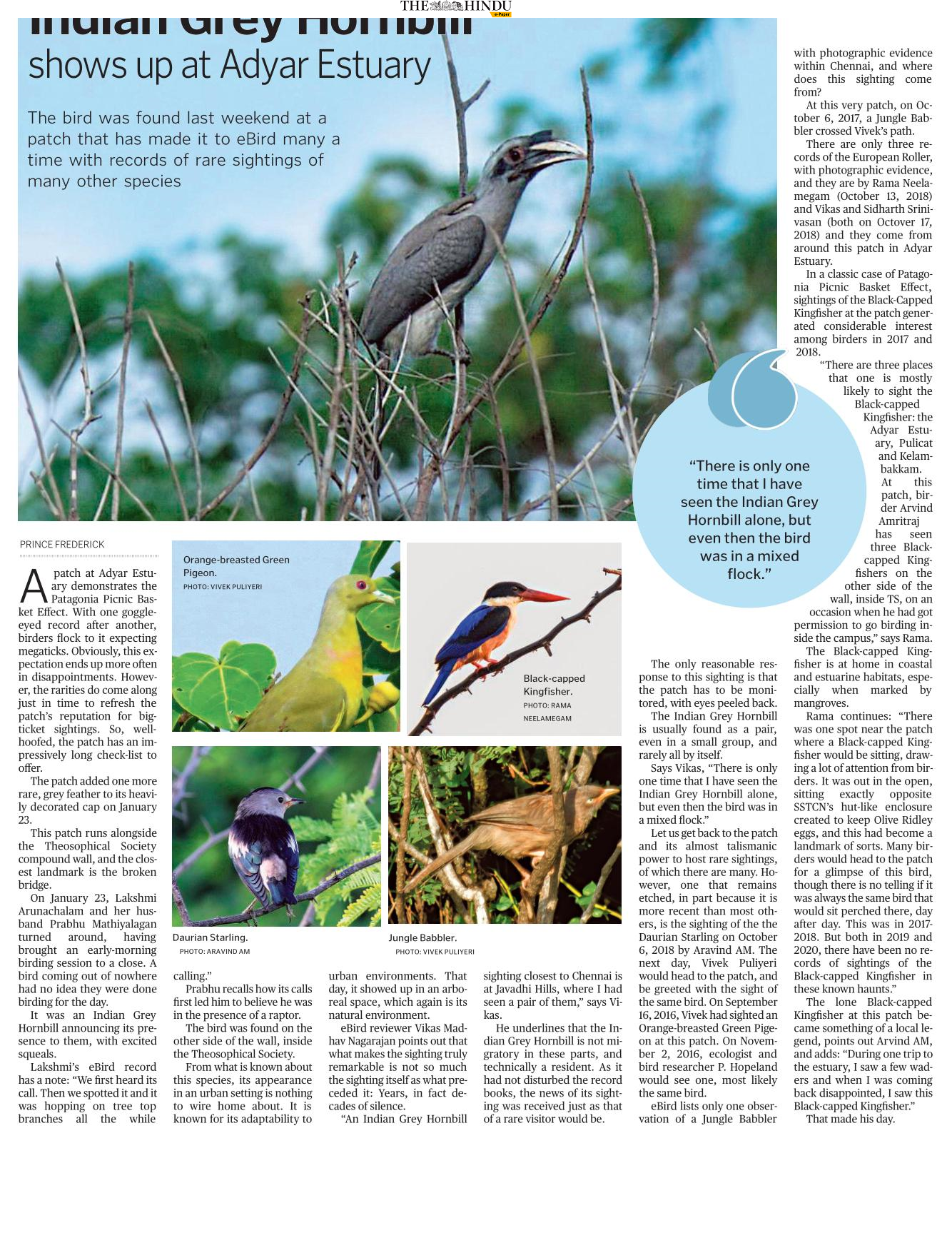Posts
Showing posts with the label Adyar river
Posted by
Flowergirl
What people should learn from rivers
- Get link
- X
- Other Apps

Posted by
Flowergirl
Discovering the Adyar riverfront trail
- Get link
- X
- Other Apps
Posted by
flowergirl
First record of Greylag in Adyar estuary
- Get link
- X
- Other Apps

Posted by
Flowergirl
A morning at the estuary
- Get link
- X
- Other Apps

Posted by
flowergirl
The excitement of the hornbill that showed up in south Madras
- Get link
- X
- Other Apps
Posted by
flowergirl
Appreciating the Adyar
- Get link
- X
- Other Apps

Posted by
flowergirl
More winged visitors flock to Adyar Poonga
- Get link
- X
- Other Apps

Posted by
flowergirl
Tree guards, bagworms and argiopes
- Get link
- X
- Other Apps

Posted by
flowergirl
More talented than Mr Ripley!
- Get link
- X
- Other Apps
